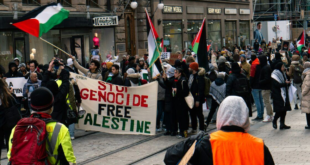 Iran was cutting its urea imports and would turn into an exporter in 2008, vowed a National Petrochemical Company (NPC) official yesterday. Jalil Ebrahimpur, the NPC projects manager, talking in a gathering on interaction between the oil industry and State Inspectorate Organization (SIO) in Assaluyeh in southern Iran, added the country was currently consuming about four million tons of chemical fertilizers.
Iran was cutting its urea imports and would turn into an exporter in 2008, vowed a National Petrochemical Company (NPC) official yesterday. Jalil Ebrahimpur, the NPC projects manager, talking in a gathering on interaction between the oil industry and State Inspectorate Organization (SIO) in Assaluyeh in southern Iran, added the country was currently consuming about four million tons of chemical fertilizers.
He said when the second unit of Ghadir Petrochemical Complex with a one million ton capacity and Kermanshah Petrochemical Complex having a 660 thousand ton capacity came on stream, domestic urea output would soar to 4.5 million tons and the country would become an exporter.
The country’s urea production would be added by another three million tons when petrochemical projects were inaugurated in Golestan, Zanjan, and Chaharmahal-Bakhtiari provinces, predicted the NPC official.
Ebrahimpur said the NPC’s investment in the industry would be close to 50 billion dollars by the end of 20-Year Vision Plan, 2025.
He told reporters 12.5 billion dollars would be attracted in the investment projects in each of the fourth and fifth five-year development plans (2005-2015).
According to the official, the underway projects of the Fourth Plan have absorbed nearly 50 percent of the targeted investment.
He added methanol, ammonia, and ethylene constituted the main part of Iran’s petrochemical exports.
Ebrahimpur said 22 petrochemical units would be built in the second phase of Assaluyeh in southern Iran, adding three urea and ammonia plants would be constructed in collaboration with foreign companies and the establishment of seven methanol units, Olefin 12, Olefin 14, one urea unit, and some smaller units were on the agenda.
He said about 30 percent of operations of the second phase of Assaluyeh had been carried out, adding the progress included methanol and ammonia projects and engineering and offsite operations.
Shifting to the inauguration of petrochemical projects, the NPC manager said Amir Kabir, Khuzestan, Bu Ali Sina, Marun, and Phase 1 of Tondguyan complexes had become operational in Mahshahr Special Economic Zone.
“Laleh Petrochemical Complex in this zone is undergoing the last-stage exploitation process and will start its commercial production in less than one month,” said the official, adding Marun Petrochemical Complex was producing at 60 percent of its capacity, blaming lack of a compressor to supply the plant with more feedstock for the loss.
Ebrahimpur named the second phase of Tondguyan Petrochemical Complex, Third Ammonia Unit of Razi, Arya Sasol, Jam, and the two ethyl benzene and styrene monomer units of Pars Petrochemical Complex as the projects that would start their commercial production in the near future.
“Arya Sasol Petrochemical Complex should have exported its products, but temporary gas shortages postponed the project,” regretted the official, vowing that the complex would come on stream by March 2008.
“According to the plan, the plants export a couple of packages and then they are officially inaugurated,” said the NPC official, adding Zagros, Ghadir, and Nuri (Borzuyeh) petrochemical complexes as well as the two units of monoxide and acetic acid of Fanavaran Petrochemical Complex had produced at fixed levels and exported their products since the current Iranian calendar year (started March 21, 2007).
He said the ethylene pipeline project in western Iran had made a 48.7 percent progress, revealing that the operations should have progressed 52.9 percent and blaming inappropriate financial support for the delay.
 Eurasia Press & News
Eurasia Press & News

